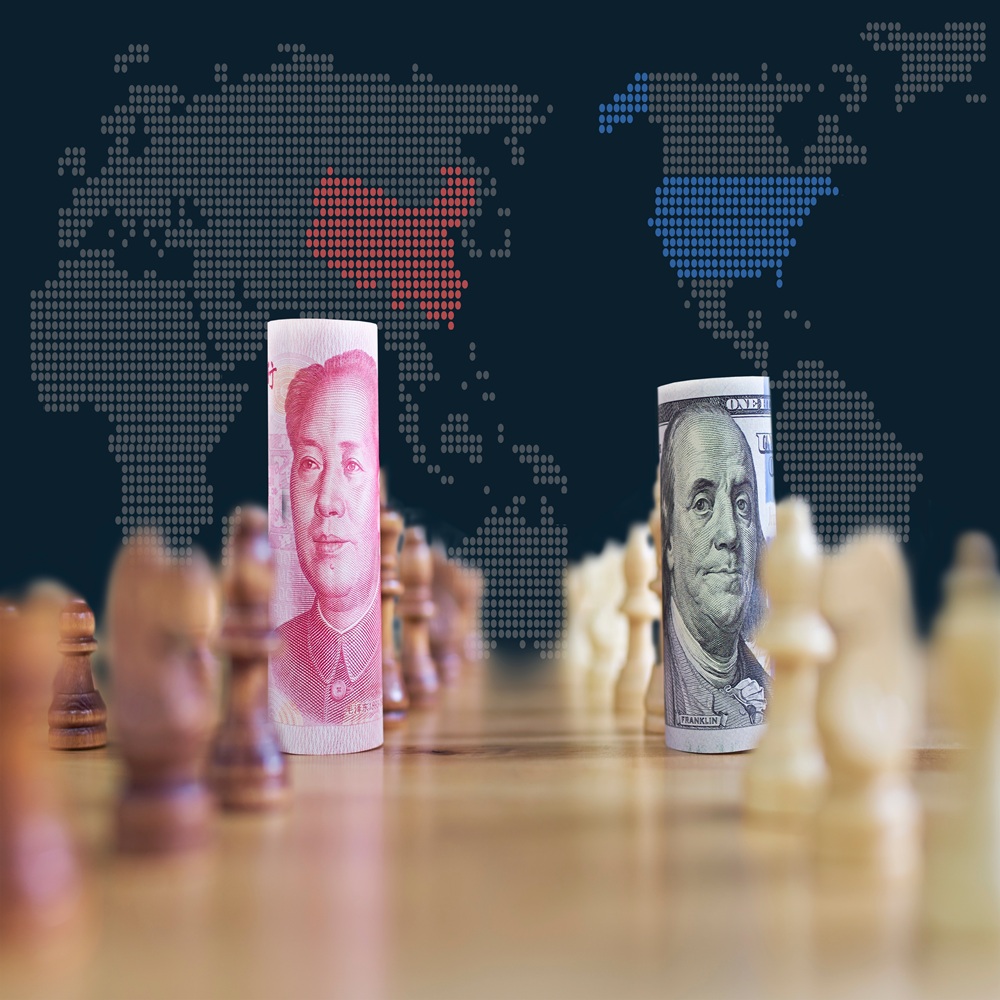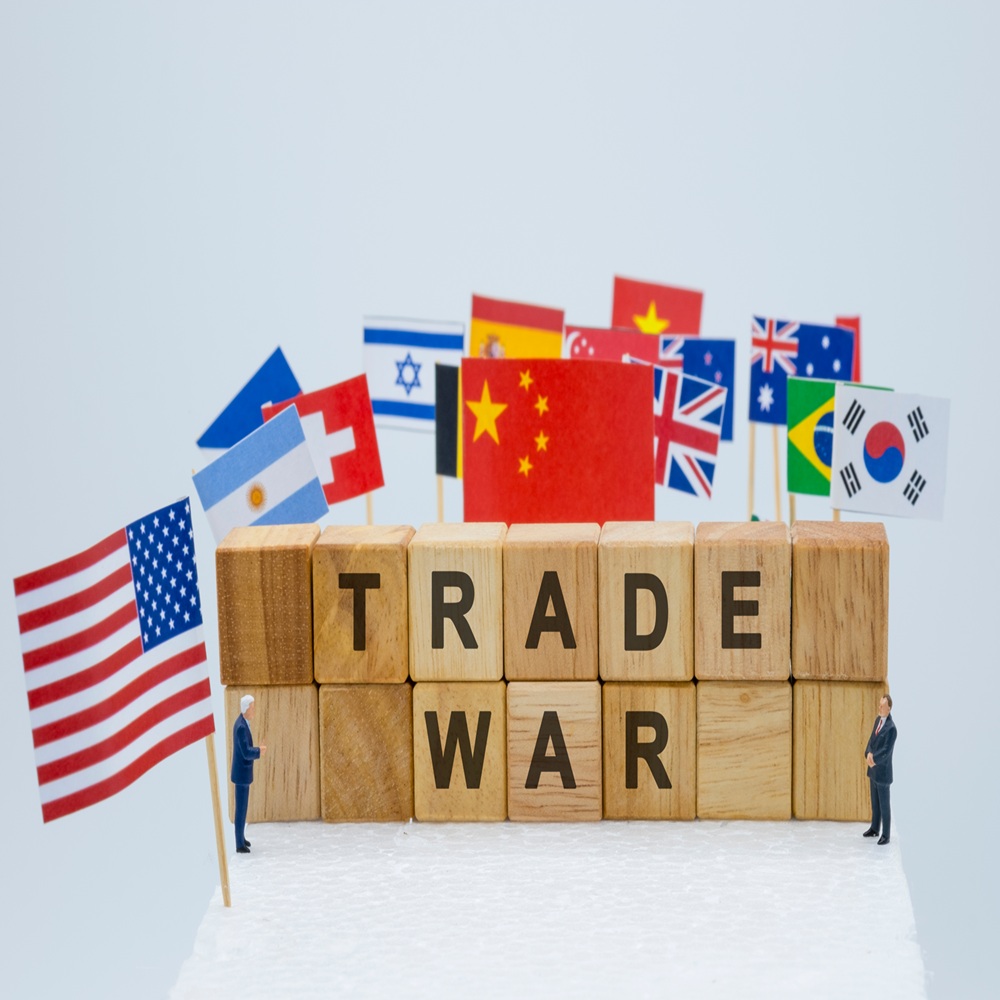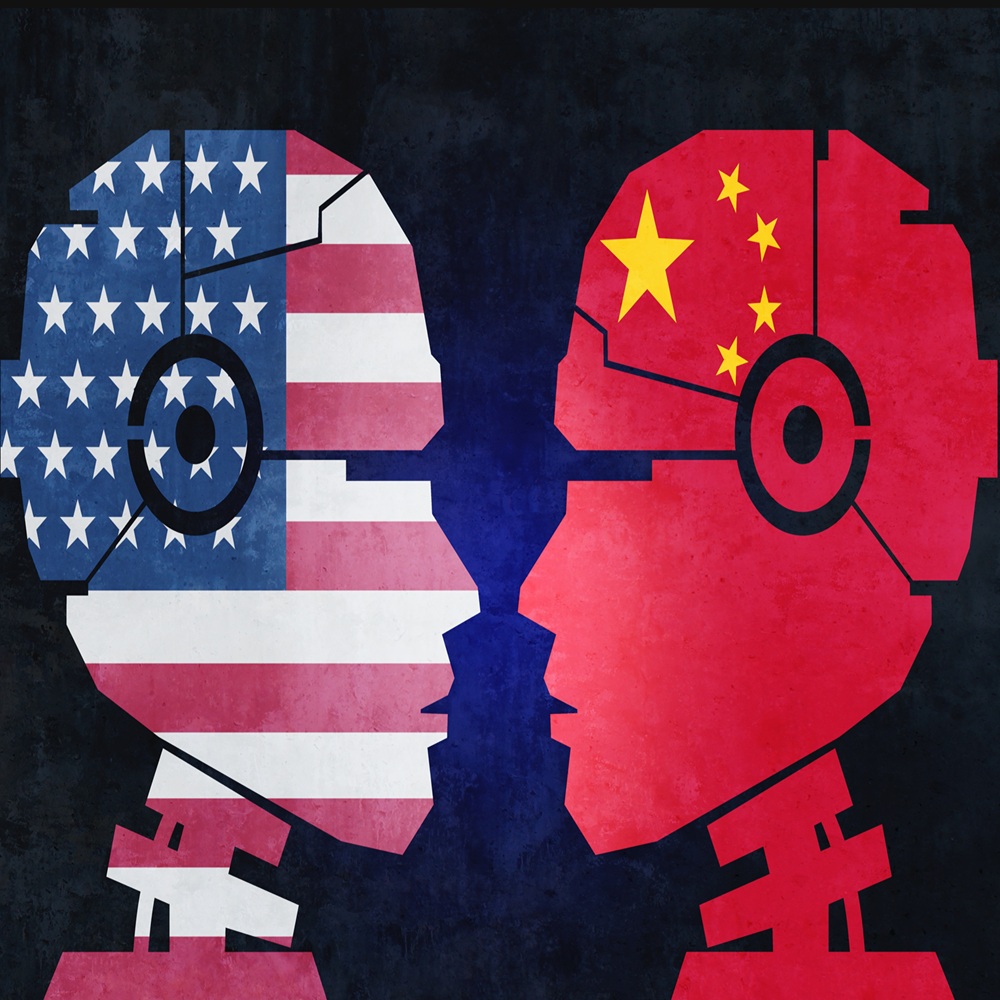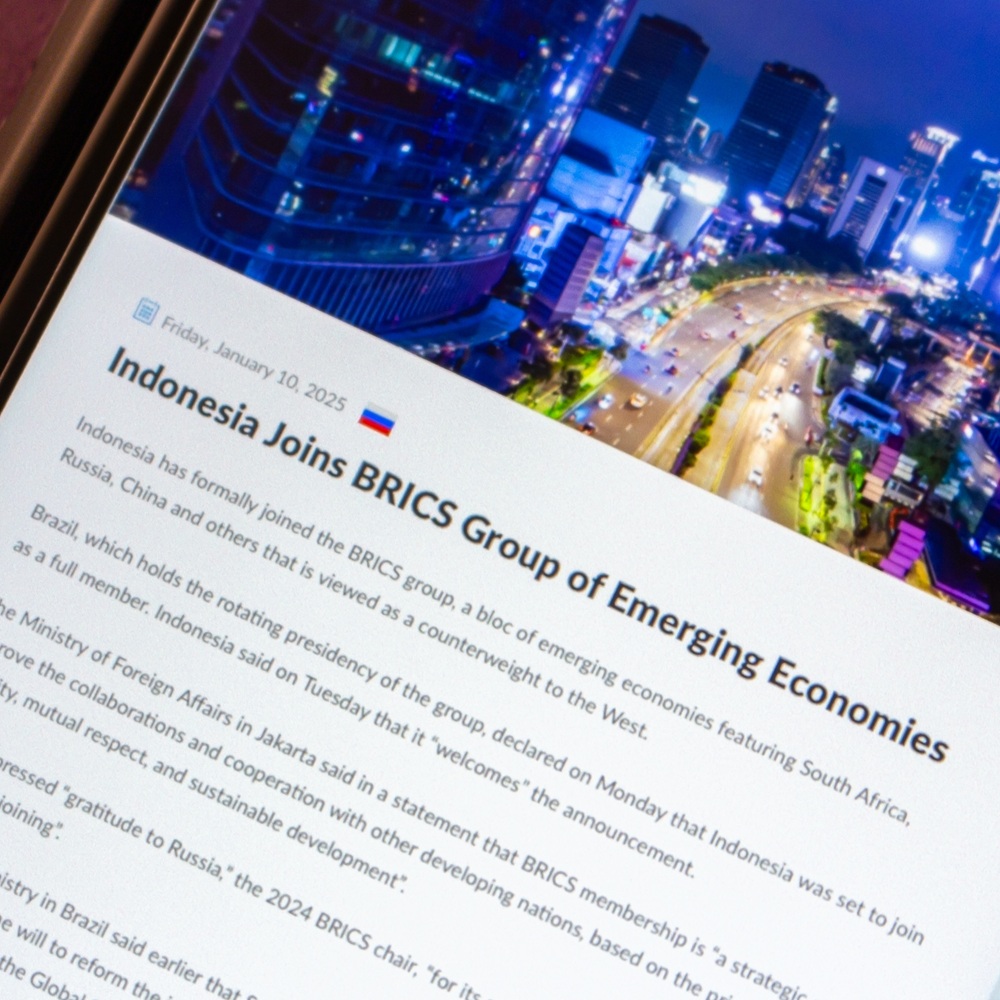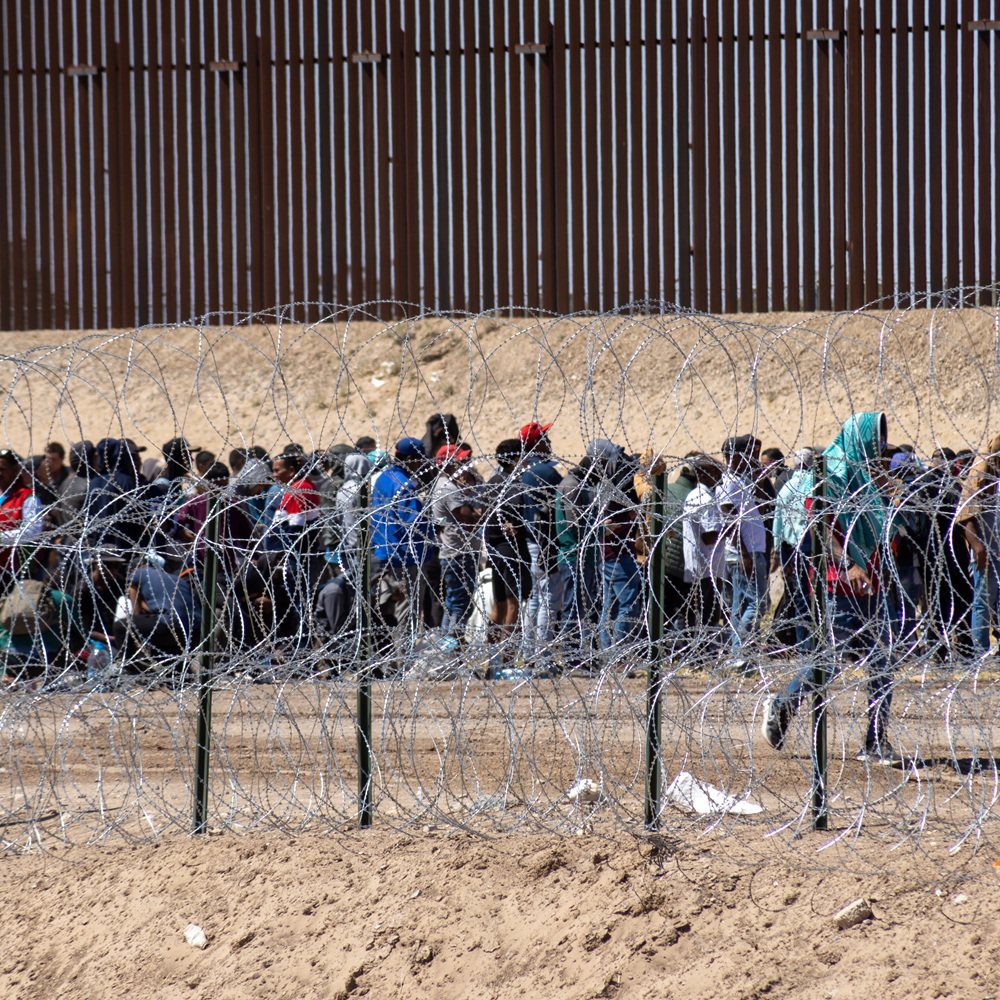
Economic Sanctions: A Root Cause of Migration
by Michael Galant , Alexander Main
한국어로 읽기 Leer en español In Deutsch lesen Gap اقرأ بالعربية Lire en français Читать на русском The question of migration occupies a central and divisive place in US politics. Yet critical questions are rarely asked about why migrants decide to leave their homes in the first place and what role US foreign policy might play in that decision. This oversight is especially glaring when it comes to one of the most common tools of US foreign policy: broad economic sanctions. There is overwhelming evidence (1) that migration1 is driven in large part by adverse economic conditions and (2) that sanctions can have severe, harmful economic and humanitarian consequences for civilians in targeted countries. The cases of Cuba and Venezuela demonstrate this relationship clearly: The imposition or tightening of sanctions by the US government have, in recent years, fueled economic crises that in turn have led to record migratory outflows. Addressing migration at its roots will require rethinking US sanctions policy as part of a broader research and policy agenda that considers the role of US foreign policy in fueling migratory push factors abroad. Economic Hardship Drives Migration The decision to emigrate — often involving leaving one’s home, family, and community to undertake a perilous journey to a new country with a different language and culture, without any guarantee of safety, accommodation, or employment — is not typically one that is taken lightly. Such a life-altering decision is rarely reducible to a single factor but is rather made in the context of multiple and interrelated push and pull factors. However, one of the most well-established sets of factors that impact migration are economic. There is broad consensus that economic conditions in the country of origin are a major determinant of the desire to migrate. A recent review of 72 peer-reviewed, survey-based analyses of migration aspirations found an overwhelming relationship between the desire to migrate and economic factors, including perception of national economic conditions, employment opportunities, household financial situation, food security, contentment with public services, and expectations of future economic conditions. A similar relationship holds true of realized migration. Many have hypothesized an inverted U-shaped relationship between development and migration, whereby higher GDP per capita is associated with increased migration as would-be migrants gain the means to do so, until a certain point — after which higher income is associated with decreased migration. However, recent research suggests that this U-shaped relationship, though observed in cross-sectional analyses, does not hold for a given country over time.2 Rather, the relationship is clearer: poor or deteriorating economic and humanitarian conditions cause people to migrate from developing countries while growth and stability lead people to stay home. Sanctions Fuel Economic Hardship Over the past two decades, the number of US-imposed sanctions has grown nearly tenfold. The United States is by far the most prevalent user of sanctions, with one-third of all countries — and over 60 percent of low-income countries — facing US sanctions in some form. While many sanctions are narrowly targeted against particular individuals or entities, others target entire sectors or even the entire economy of a country. Such broad-based sanctions are indiscriminate and can have profound impacts on the economies, and therefore civilians, of targeted nations (and even purportedly targeted sanctions can have significant spillover effects). Broad-based sanctions can impede economic growth, potentially triggering or extending recessions and even depressions; restrict access to critical resources like medicine, food, and energy; disrupt humanitarian aid (despite nominal exemptions); and consequently exacerbate poverty, illness, and hunger. As a result, sanctions can lead to a significant number — in some cases tens of thousands — of preventable deaths. In a 2023 literature review for CEPR, economist Francisco Rodríguez determined that 94 percent of peer-reviewed econometric studies on the subject found substantial, statistically significant “negative effects on outcomes ranging from per capita income to poverty, inequality, mortality, and human rights” as a result of sanctions. One study associated sanctions with, on average, a 26 percent drop in GDP per capita — roughly the size of the Great Depression. Another tied sanctions to a 1.4-year decline in female life expectancy — comparable with the global impact of COVID-19. Yet another found a 2.5 percent increase in childhood HIV infection rates. While such indiscriminate impacts are often denied by the policymakers that impose sanctions, it is difficult to reconcile this denial with the fact that major macroeconomic factors such as growth rates, oil production, foreign reserves, currency stability, and the cost of essential goods are widely used — often by these very same policymakers — as metrics of “success” of sanctions. That these macroeconomic factors would in turn impact civilians is all but undeniable. In fact, there are significant reasons to believe that the broad economic and humanitarian impacts of certain sanctions regimes are intentional — and therefore are not a matter of calibration, but are inherent to the policy itself. Sanctions Induce MigrationIf migration is driven in part by economic hardship and sanctions can cause great economic and humanitarian suffering, then it follows that sanctions can substantially contribute to migration. This is not just borne out logically, but can be seen in the data. In October 2024, the Journal of Economic Behavior & Organization published what may be the first and only systematic cross-national empirical analysis of how such sanctions impact international migration. The findings are striking. Using data on migration flows from 157 countries over more than half a century, the authors find that Western multilateral sanctions3 have increased emigration from target countries by, on average, 22 to 24 percent. Notably, they also find that “migrant flows return to their pre-sanction level once sanctions are lifted.” In few cases is this relationship between sanctions and migration clearer than in the cases of Cuba and Venezuela. Trump-Biden Sanctions Spur Cuban Depopulation The US embargo against Cuba — referred to by many as a blockade due to its extraterritorial impacts — is the US’s oldest and most comprehensive sanctions regime. Beginning in 1960 with export prohibitions in response to the Castro government’s agrarian reforms and nationalizations, successive administrations soon escalated this embargo into a comprehensive ban on nearly all trade, travel, and financial transactions, with the goal of destabilizing and ultimately toppling the Cuban government. While these sanctions have been periodically tightened or relaxed over the years, this foundational, comprehensive embargo has remained intact for over six decades and has since been enshrined into law through the Cuban Liberty and Democratic Solidarity (LIBERTAD) Act of 1996. During his last two years in office, President Barack Obama took significant steps toward the normalization of bilateral relations with Cuba by, among other things, formally resuming diplomatic relations, loosening restrictions on travel and remittances, and removing Cuba from the State Sponsors of Terrorism (SSOT) list, a measure that had effectively cut the island off from much of the global financial system. However, under the first Donald Trump administration, these policies were largely reversed, and the embargo was expanded to an unprecedented level. President Joe Biden, despite campaign promises to change the course of Cuban policy, maintained most of President Trump’s measures. Days before leaving office, Biden issued executive orders undoing Trump’s harshest sanctions measures only to see them predictably rescinded immediately following Trump’s return to the White House. In the case of both Trump and Biden, Cuban policy appears to have been driven in large part by electoral considerations in Florida, where hawkish Cuban American voters have long (and questionably) been seen as a key demographic in both parties’ efforts to win the state. The US embargo has long hindered Cuban economic growth and development, particularly since the late 1980s when the Soviet Union and its COMECON partners discontinued economic support for the island. In 2018, the UN Economic Commission for Latin America and the Caribbean validated the Cuban government’s estimates that the six-decade embargo had cost the country $130 billion. By 2024, that estimate had grown to $164 billion. A recent econometric study on changes in US policy toward Cuba between 1990 and 2020 found a “substantial negative impact of sanctions policy shifts on Cuban economic growth.” Further, “this impact on GDP is concentrated in the component of household consumption” — in other words, Cuban citizens bear the highest burden. Over the last few years, Cuba’s economic situation has deteriorated further, in large part as a result of Trump-Biden policies. Measures such as returning Cuba to the SSOT list (despite no evidence of Cuban support for terrorism), restricting remittances, and prohibiting US citizens from doing business with dozens of “restricted entities” have greatly limited Cuba’s access to foreign exchange. This has, in turn, prevented Cuba from importing many essential goods (including critical pharmaceutical and agricultural inputs) and services (including maintenance services for Cuba’s ailing energy infrastructure), servicing its external debt, and perhaps most crucially, stabilizing the local currency following a major monetary reform in 2021. Another Trump measure — his decision to implement Title III of the LIBERTAD Act — has had a significant chilling effect on foreign investment in Cuba only a few years after the enactment of a reform opening up most sectors of the economy to foreign investors. This controversial provision, which allows for lawsuits against US or foreign persons doing business with Cuban entities that use or benefit from property expropriated at the beginning of the Cuban Revolution, had been waived by prior presidents and by Trump himself, until April 2019. The far-reaching negative impact of these and other Trump measures are part of the reason why Cuba’s economy has failed to significantly recover from the global economic downturn triggered by the COVID pandemic. Cuba has been plunged into the most serious economic and humanitarian crisis of its contemporary history, characterized by repeated blackouts, water shortages, fuel shortages, rising food costs, the deterioration of basic services such as garbage collection, and the spread of preventable diseases. Cuba’s fledgling private sector, which greatly expanded following Obama’s normalization measures and domestic liberalization measures in 2019 and 2021, is facing an uncertain future as a result of the crisis and new, stricter Cuban regulations designed in part to offset the effects of sanctions by capturing increasingly scarce foreign exchange. This economic crisis has in turn spurred a migration crisis. Data from the national statistics office of the government of Cuba shows skyrocketing net emigration following 2020 (see Figure 1). By August 2022, the outflow of migrants had surpassed that of the famous 1980 Mariel boatlift and the 1994 Balsero/Rafter crises combined. Independent research — later confirmed by the Cuban government — estimates an even larger increase than those published by the national statistics office: the departure of over one million people, representing 10 percent of the country’s entire population, in 2022 and 2023 alone. As one researcher warned in 2022: “Cuba is depopulating.” While not all of these migrants ended up in the United States, the years 2022 and 2023 saw record-breaking numbers of encounters with Cuban migrants by the US Customs and Border Protection (CBP). In 2022, the CBP encountered more Cubans than any other nationality except Mexicans. Cubans constituted more than 10 percent of all encounters.4 Given the Trump administration’s, and particularly Secretary of State Marco Rubio’s, apparent commitment to maintaining the current policy toward Cuba — and perhaps even hardening it with yet more sanctions — we can expect out-migration from the island to continue at record levels for the foreseeable future. “Maximum Pressure” Sanctions Fueled Venezuelan Exodus While the US has maintained limited sanctions on Venezuela since 2005, the current sanctions regime is defined by the “maximum pressure” campaign initiated during the first Trump administration in an attempt to push President Nicolás Maduro out of office. In August 2017, Trump blocked the government of Venezuela, including the state-owned oil company Petróleos de Venezuela, S.A. (PDVSA), from accessing financial markets. In late 2018, Trump sanctioned the gold sector. Perhaps most significantly, the oil sector and PDVSA were designated as sanctioned entities in January 2019. Additional sanctions on the financial and defense sectors and the central bank soon followed, alongside the escalation of secondary sanctions against third parties. The US’s and many of its allies’ policy of nonrecognition of the Maduro government has also led to effective sanctions, such as the loss of access to roughly $2 billion in reserves held at the Bank of England and $5 billion in Special Drawing Rights at the International Monetary Fund. These “maximum pressure” policies were largely maintained under the Biden administration, with a few significant exceptions. Since November 2022, Chevron Corporation has been permitted to produce and export oil from Venezuela. In October 2023, Biden issued a General License temporarily lifting most oil sector and PDVSA sanctions but allowed the license to expire six months later (while leaving a wind-down period). Though Venezuela’s economic crisis — driven in part by both misguided economic policies and falling global oil prices — began prior to the imposition of sanctions, US sanctions have substantially contributed to the severity and longevity of the contraction. Sanctions impact the Venezuelan economy through numerous channels, but perhaps none more significantly than through oil. The Venezuelan economy is highly dependent on oil exports, historically relying on the sector — and its main actor, PDVSA — for 95 percent of its foreign exchange. From 2.4 million barrels per day (bpd) prior to the crisis, oil output hit a low of 0.4 million bpd in mid-2020 — an 83 percent collapse. Even with today’s Chevron license, output has yet to break 1 million bpd. A 2022 analysis by Francisco Rodríguez attributes 797,000 bpd of this decline to the 2017 sanctions alone. Other assessments point to similar figures, with some attributing more than half of the decline to sanctions. As Rodríguez points out, new sanctions are associated with marked downward inflection points in Venezuelan oil output (see Figure 2). Ultimately, the Venezuelan crisis saw a 71 percent collapse in GDP per capita. As Rodríguez notes, this was the equivalent of three Great Depressions and the largest peacetime economic contraction in modern history. By Rodríguez’s assessments, more than half of this decline was attributable to sanctions and related political acts. Whatever claims policymakers may make about the targeted nature of sanctions, such broad macroeconomic effects inescapably and indiscriminately impact civilians. In addition to the general effects of economic contraction and the loss of foreign exchange with which to import essential goods such as food and medicine, sanctions have also inhibited shipments of COVID vaccines and other medical supplies; contributed to the degradation of the energy grid and frequency of electrical shortages; and otherwise furthered the deterioration of public health, education, and water services. Indeed, the UN special rapporteur on unilateral coercive measures reports that sanctions on Venezuela have “prevented the earning of revenues and use of resources to maintain and develop infrastructure and for social support programs, which has a devastating effect on the entire population of Venezuela, especially — but not only — those living in extreme poverty, women, children, medical workers, people with disabilities or life-threatening or chronic diseases, and the indigenous population.” According to one CEPR estimate, sanctions likely led to tens of thousands of excess deaths in one year alone. Unsurprisingly, such a dire humanitarian crisis has contributed to an unprecedented mass exodus. In the last decade, over seven million Venezuelans have left the country. In one of the few direct quantitative studies on the impacts of sanctions on migration, Francisco Rodríguez finds that over four million of these seven million left “as a result of the economic deterioration caused by sanctions and toxification effects.” Rodríguez further estimates that a return to “maximum pressure” policies would result in the emigration of an additional one million Venezuelans in the coming five years. While the vast majority of these Venezuelan migrants ended up in countries closer to home, such as Colombia and Peru, a growing number have made their way to the US border as well (see Figure 3). In 2023 and 2024, CBP encountered more migrants from Venezuela than any other country except Mexico.5 According to survey data from the Migration Policy Institute, Venezuela is the single fastest growing country of birth of immigrants to the US since “maximum pressure” began in 2017 (alongside other sanctioned countries, such as Afghanistan — number 2 — and Nicaragua — number 7). The Trump administration was repeatedly warned that mass migration was a likely consequence of its sanctions policy, yet pursued it anyway. According to one senior US Department of State official: “This is the point I made at the time: I said the sanctions were going to grind the Venezuelan economy into dust and have huge human consequences, one of which would be out-migration.” To Address Migration, Lift Economic Sanctions Though migration has many causes, and it is difficult to precisely quantify the contribution of sanctions to overall emigration levels, the following are nonetheless clear: 1. Migration is driven in large part as a reaction to adverse economic conditions.2. Economic sanctions often have profound adverse economic impacts.3. Econometric evidence indicates that sanctions directly contribute to migratory flows.4. In Cuba and Venezuela, economic sanctions are associated with mass migration. While fearmongering and anti-migrant sentiment should be flatly rejected, it is plainly preferable that people in other nations not be forced into circumstances that compel their displacement. To achieve this goal, broad economic sanctions must be lifted. Recognition of the link between sanctions and migration has been growing among US policymakers. In May 2023, 21 members of Congress — led by members representing border states that have witnessed an influx of large numbers of migrants — sent a letter to President Biden urging the easing of sanctions on Cuba and Venezuela to mitigate push factors for migration. A separate letter from over 50 economists and other scholars shortly followed, corroborating the claim that lifting sanctions would help ease migration. Former Mexican president Andrés Manuel López Obrador, whose country is also impacted by migratory flows, has said the same. An Alternative Approach to Migration Is Available This relationship between US economic sanctions and migration further suggests the need for a research and policy agenda that considers migration within the context of global inequalities and underdevelopment and critically considers the role of US foreign policy — including but not limited to sanctions — in reproducing and exacerbating migratory push factors. In other words, addressing migration at its root requires rethinking and rectifying the US’s approach to Latin America as well as other parts of the Global South. While the Biden administration proclaimed a “root-causes” strategy toward addressing migration from Central America, intending to address push factors in countries of origin, including corruption, crime, and economic insecurity, the strategy failed to consider how the US’s own policies might exacerbate these conditions. In contrast, the recently established Congressional Caucus to Address Global Migration and the Migration Stability Resolution introduced by its co-founder, Rep. Greg Casar (D-TX), take a more comprehensive approach, aiming to — in Rep. Casar’s words — “[change] the failed US policies that cause displacement abroad and force people to flee their home countries.” Tackling broad economic sanctions, anti-worker trade agreements, US security assistance for repressive governments, inequalities in the global financial system, and more, these efforts offer an alternative path toward addressing migration: a path that is both more humane and more effective. Footnotes 1. For the purposes of this article, “migration” is used to refer specifically to international migration.2. Moreover, as CEPR Senior Research Fellow Francisco Rodríguez explains, even if there were truth to the U-shaped hypothesis, it would be a story of the long-run structural and societal transformations that accompany development and would not contradict a thesis that short-run economic contractions — such as those that might result from the imposition of sanctions — fuel migration across income levels. Indeed, short-run fluctuations in growth and employment are observed to significantly impact migration.3. While this study assessed joint US-EU sanctions specifically, one can expect a similar relationship to hold in unilateral US sanctions, given the dominant role of the United States in the global financial system and given that EU sanctions policy often follows the lead of US policy.4. Authors’ calculations based on CBP nationwide encounters data, converted from fiscal to calendar years.5. Authors’ calculations based on CBP nationwide encounters data, converted from fiscal to calendar years.










